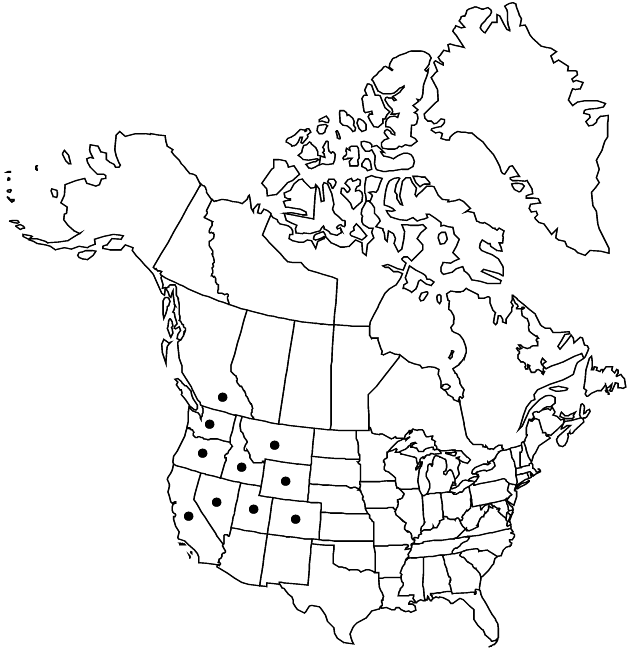Difference between revisions of "Crepis modocensis subsp. modocensis"
Common names: Modoc or Siskiyou hawksbeard
Synonyms: Crepis scopulorum Coville
FNA>Volume Importer |
FNA>Volume Importer |
||
| Line 47: | Line 47: | ||
|publication year= | |publication year= | ||
|special status= | |special status= | ||
| − | |source xml=https://jpend@bitbucket.org/aafc-mbb/fna-data-curation.git/src/ | + | |source xml=https://jpend@bitbucket.org/aafc-mbb/fna-data-curation.git/src/f50eec43f223ca0e34566be0b046453a0960e173/coarse_grained_fna_xml/V19-20-21/V19_289.xml |
|tribe=Asteraceae tribe Cichorieae | |tribe=Asteraceae tribe Cichorieae | ||
|genus=Crepis | |genus=Crepis | ||
Revision as of 21:16, 16 December 2019
Plants 10–35 cm; setae yellowish, ± straight. Stems (slender, always with primary axes, branched near or beyond middles) sparsely setose (setae yellowish). Leaves: petioles setose; blades (narrowly elliptic), 10–20 × 2–4 cm. Involucres 11–16 mm. Phyllaries sparsely setose (setae blackish). Cypselae deep greenish to blackish or deep reddish brown, 7–12 mm, tapered distally, not distinctly beaked; pappi 5–10 mm. 2n = 22
Phenology: Flowering May–Jul.
Habitat: Dry open ridges, rocky slopes
Elevation: 900–2500 m
Distribution

B.C., Calif., Colo., Idaho, Mont., Nev., Oreg., Utah, Wash., Wyo.
Discussion
Subspecies modocensis includes a diploid form and apomictic polyploid forms (E. B. Babcock 1947).
Selected References
None.
Lower Taxa
None.